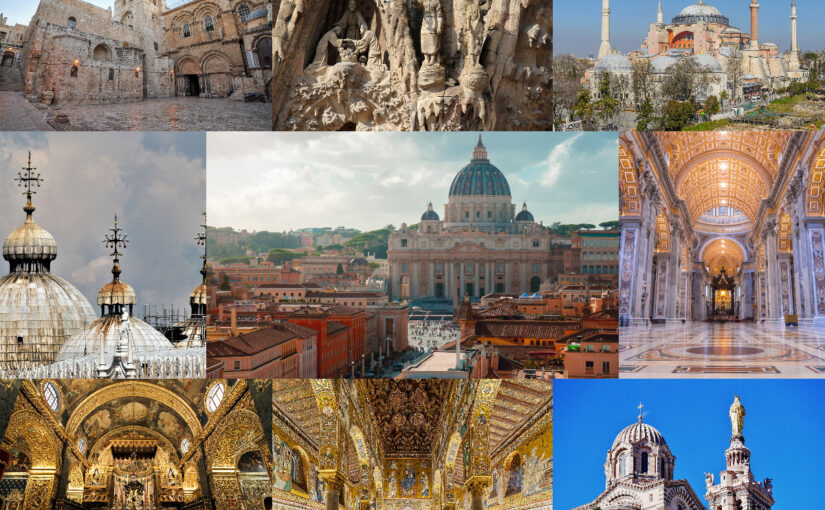Traveling across the Mediterranean is like flipping through the pages of a living storybook. Between tasting olives drizzled with oil, wandering through Venetian alleyways, or feeling the salty air of the Aegean, one cannot miss another vital thread woven through the landscape: the magnificent churches and cathedrals that stand as timeless witnesses to centuries of faith, artistry, and culture. Visiting these sacred spaces is not only about spirituality. It is about encountering breathtaking architecture, echoing histories, and moments of stillness amid the buzzing life outside their doors.
The Mediterranean Spirit and Its Churches
The Mediterranean region has always been more than just a meeting point of land and sea. It is also a melting pot of civilizations. Empires clashed here, pilgrims journeyed across these waters, and merchants traded their goods while bringing faith and tradition with them. Churches blossomed in various styles across the coastline, shaped by Byzantine domes, Gothic spires, Baroque facades, and even subtle hints of Islamic artistry. What unites them is their ability to capture the essence of the Mediterranean itself: diverse, layered, and endlessly fascinating.
St. Peter’s Basilica in Vatican City
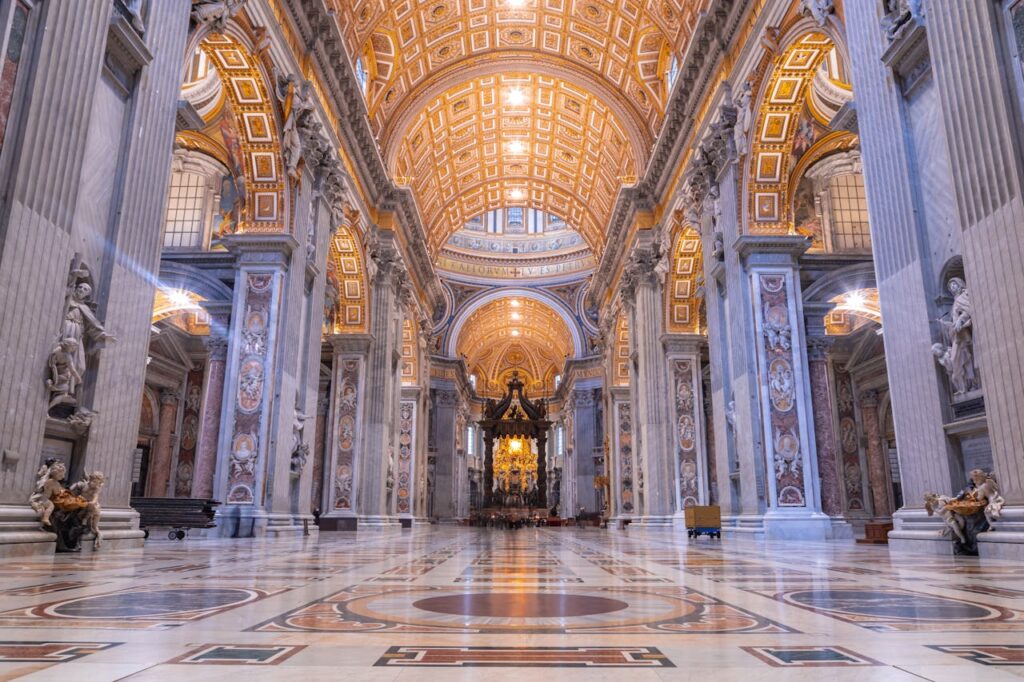
No list of Mediterranean churches could start without mentioning the monumental St. Peter’s Basilica. Towering over Vatican City, this church is not only the heart of Catholicism but also an architectural wonder that draws millions. Pilgrims and travelers alike gaze in awe at its vast dome designed by Michelangelo, its intricate mosaics, and gilded details that shimmer under sunbeams entering from high windows. Standing in St. Peter’s Square, one feels refreshed by a mix of grandeur and intimacy, as if human endeavor and divine inspiration had worked hand in hand to create this icon of the Mediterranean world.
La Sagrada Família in Barcelona
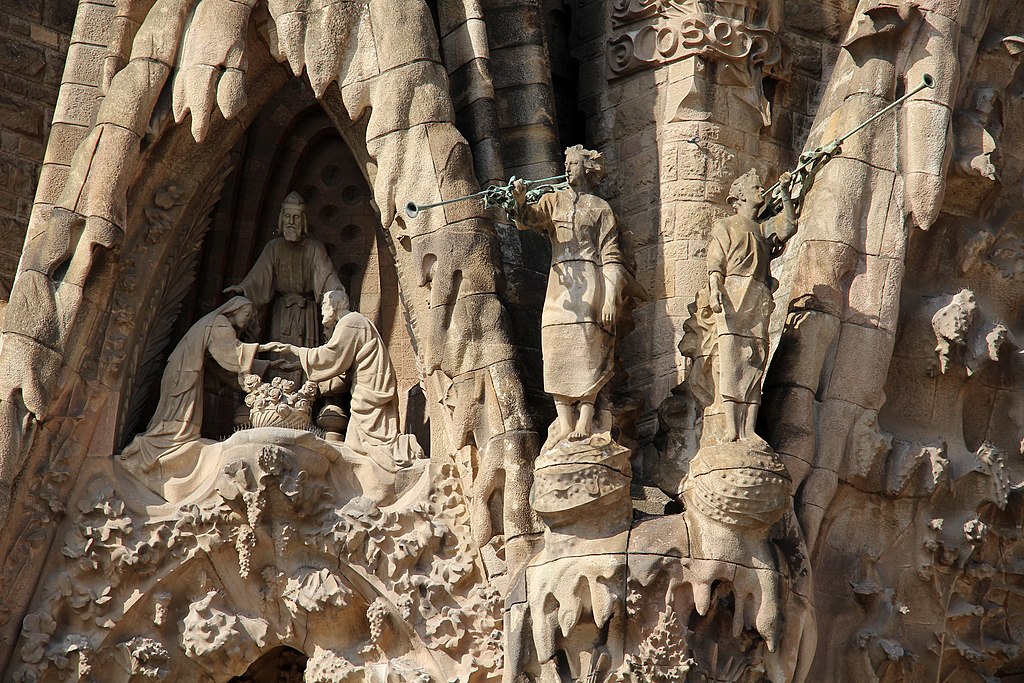
Heading west to Barcelona, one of the most distinctive churches on the planet captures every visitor’s imagination. The Sagrada Família, still unfinished and ever evolving, is Antoni Gaudí’s masterpiece. Its jagged spires seem to grow like stone trees reaching to the heavens, while its interior feels like stepping into a forest of light and color. Unlike traditional churches, this basilica radiates movement, as if the building itself is alive. Walking through its doors one senses both reverence and curiosity, the kind that perfectly reflects Barcelona’s balance of tradition and creativity.
St. Mark’s Basilica in Venice
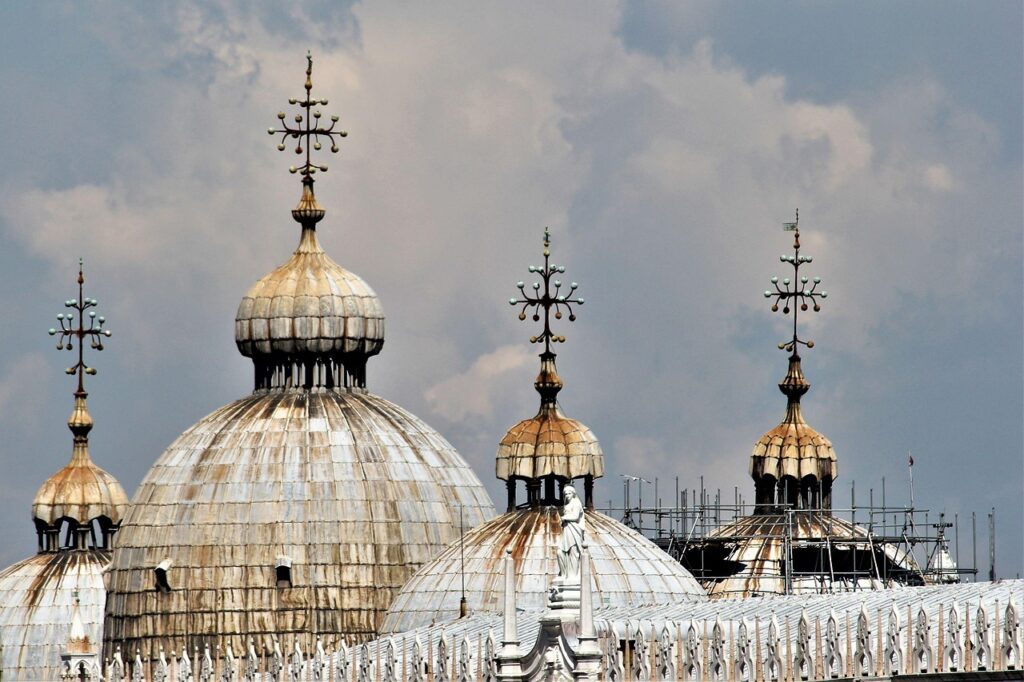
Drifting along the canals of Venice, the shimmering mosaics of St. Mark’s Basilica beckon from the famous square of San Marco. This church is often called the “Church of Gold,” and for good reason. Its interior glows with glittering Byzantine mosaics while its exterior tells tales of Venice’s maritime power, displaying treasures brought back from across the seas. The mixture of Eastern and Western styles makes it a true embodiment of Mediterranean exchange. Sitting on the steps outside, listening to street musicians, and then stepping inside the golden hush of the basilica is an experience that lingers with every traveler.
Hagia Sophia in Istanbul
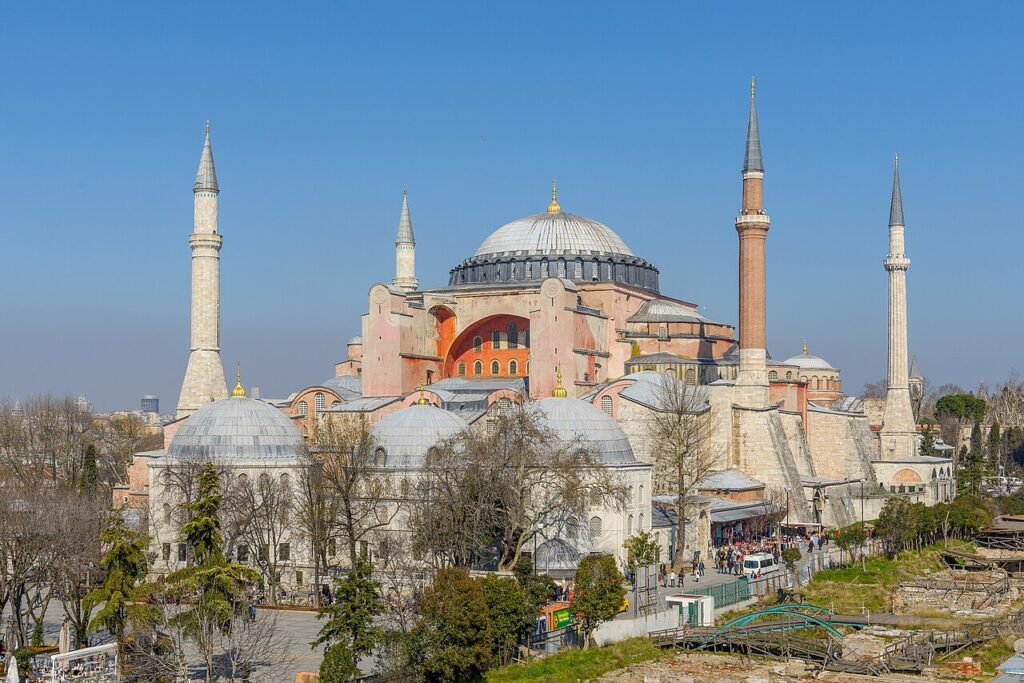
Straddling the Bosphorus between Europe and Asia, the Hagia Sophia remains one of the most dazzling monuments on Mediterranean soil. For centuries it served as a cathedral, then a mosque, and now it exists as a symbol of cultural convergence. Its gigantic dome, seemingly suspended by light, astonishes anyone who enters, while intricate calligraphy and Christian mosaics co-exist in one of the world’s greatest architectural wonders. Hagia Sophia tells the story of transition and transformation, mirroring the Mediterranean itself, where varied traditions meet and create something extraordinary.
St. John’s Co-Cathedral in Valletta
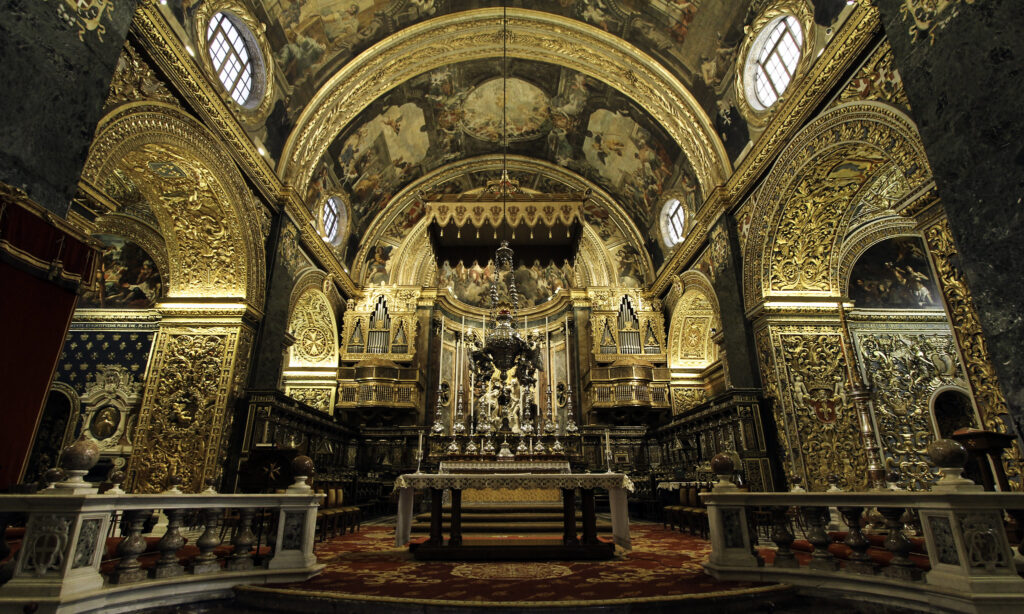
In Malta’s capital, a city built by the Knights of St. John, stands St. John’s Co-Cathedral. From the outside, its sandy limestone façade seems simple, but stepping inside is like entering a jewel box. Golden carvings, ornate chapels, and dramatic works of art burst into view, including a famous painting by Caravaggio that seems alive with theatrical effect. The cathedral captures the spiritual devotion and warrior spirit of the knights who once defended the island, standing today as one of Malta’s most treasured spaces.
Palermo’s Palatine Chapel
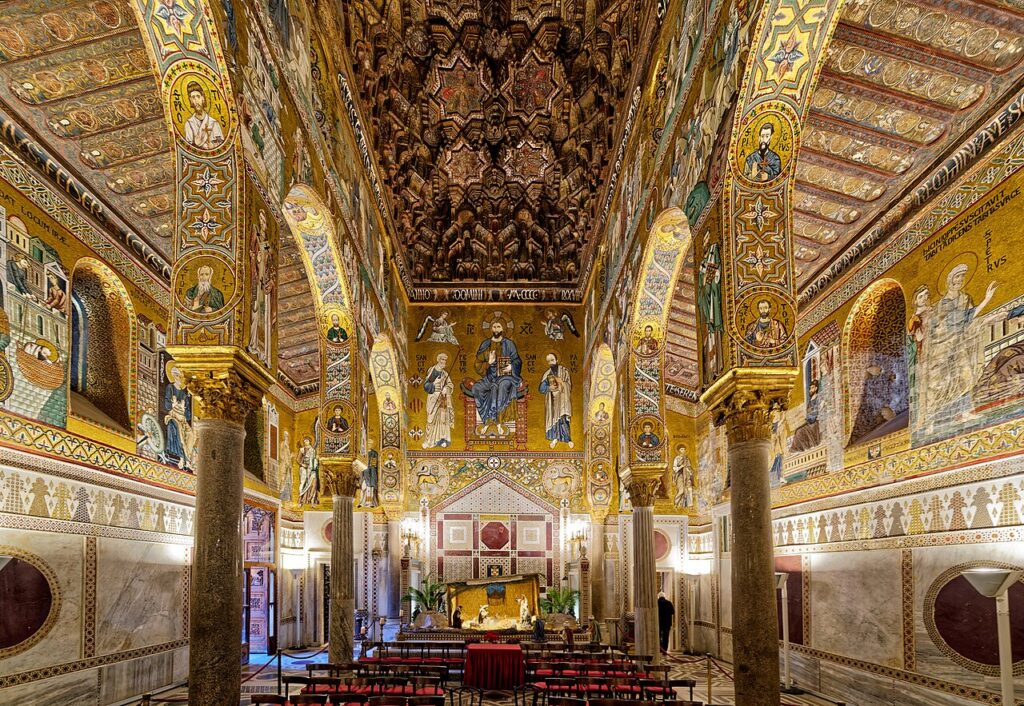
Sicily is a land where cultures have endlessly intertwined, and nowhere is this more evident than in Palermo’s Palatine Chapel. This jewel of Norman architecture combines Latin, Byzantine, and Arab influences into one astonishing space. Golden mosaics shimmer above while wooden ceilings intricately carved with Islamic designs stretch across the room. It feels like walking through a living museum where East and West embrace. The chapel is not only breathtaking to behold, but it also reflects the true essence of Mediterranean diversity.
Church of the Holy Sepulchre in Jerusalem
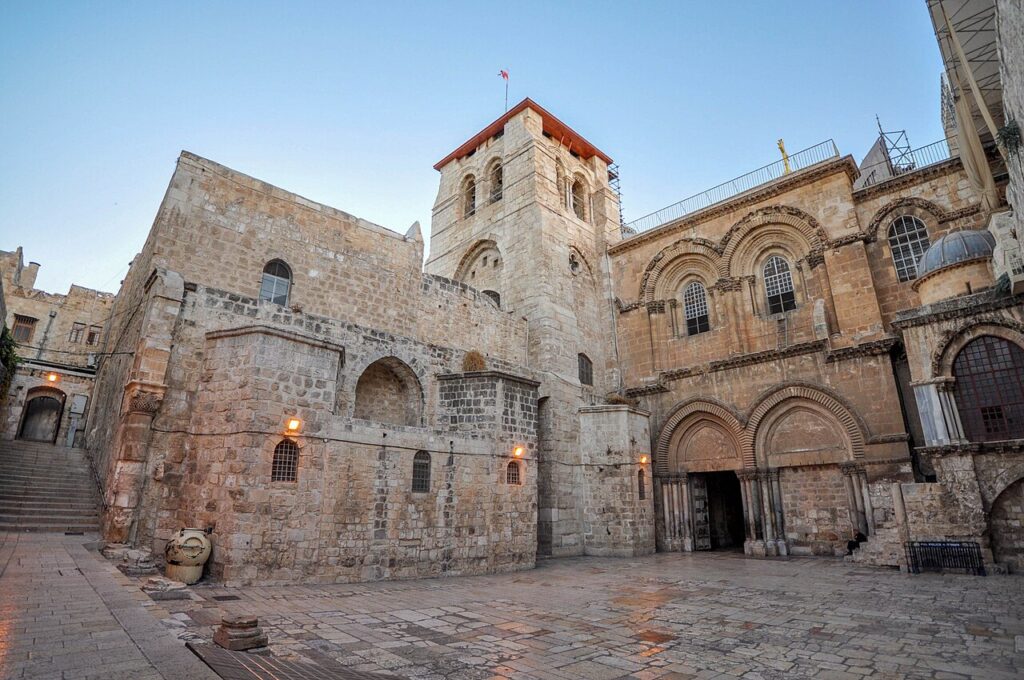
For many, a journey around Mediterranean churches would not be complete without the Church of the Holy Sepulchre in the heart of Jerusalem. Revered as the site of the crucifixion and resurrection of Jesus, it is one of the most sacred destinations for countless pilgrims. Stepping into its chambers, visitors feel centuries of devotion pressing in around them. Candles flicker against dark stone walls, and the quiet prayers of travelers in many languages rise together. This is a church less about impressive design and more about raw spiritual weight, a place where time feels suspended.
Notre-Dame de la Garde in Marseille
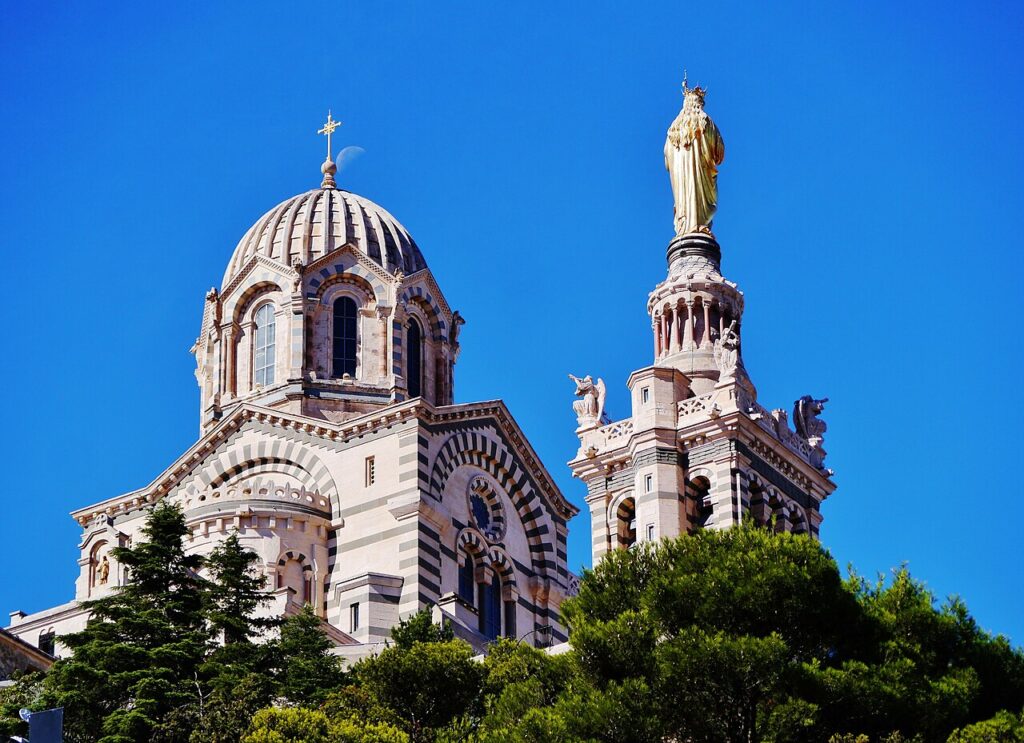
Perched high on a hill above the French port city of Marseille, the striped Notre-Dame de la Garde greets ships and welcomes visitors from afar. The golden Madonna shining atop its tower is visible for miles, watching over sailors and travelers as they come and go. Inside, maritime votive offerings hang on the walls, giving the church a unique maritime character. The view from its terrace is breathtaking, stretching across the terracotta roofs of Marseille to the endless blue of the Mediterranean Sea.
The Living Heritage of Mediterranean Churches
What makes Mediterranean churches so captivating is their ability to connect past and present. They are not static museums, even if their walls contain centuries of history. They continue to serve as living places of worship, community gathering, and cultural pride. Some host quiet mass at dawn, echoing chants under ancient domes. Others hold concerts that allow music to glide along marble columns, revealing their acoustics in surprising ways. And many are spaces where travelers step in from lively streets to find a moment of peace before heading back into the rhythm of Mediterranean life.
Planning Your Visits
When traveling to discover these spiritual gems, it is worth keeping a few tips in mind. Always dress modestly, as many churches have dress codes in place. Check visiting hours, as some spaces close during services. And remember to pause, look up, and let the atmosphere work its magic rather than rushing through with a camera. The best memories of Mediterranean churches are often the quiet ones: the scent of incense, a flicker of candlelight, or rays of sun painting colored patterns through stained glass.
A Sacred Journey by the Sea
Exploring great Mediterranean churches is like embarking on a voyage through time, traversing cultures and witnessing the endless dialogue between human creativity and divine aspiration. From Rome’s grandeur to Malta’s opulence, from Istanbul’s domes to Barcelona’s dreamlike towers, these sacred spaces enrich any Mediterranean journey. They are more than monuments, they are living symbols of faith, endurance, and artistry. For the traveler ready to wander beyond beaches and markets, the churches of the Mediterranean offer encounters that are as inspiring as they are unforgettable.
If our work has inspired you, helped you grow, or simply brought a little warmth to your day, consider supporting Thalysia.com with a small donation. Your contribution helps us continue exploring ancient landscapes, documenting local traditions, and celebrating the art of living well.
